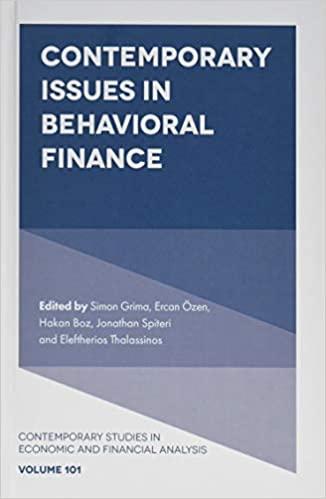Question
1. The trigger in a catastrophe bond determines when changes are made to the payment of principal or interest, or both. is usually designed to
1. The trigger in a catastrophe bond
determines when changes are made to the payment of principal or interest, or both.
is usually designed to limit the ability of the insured to manipulate its recovery under the bond.
is frequently based on an industry-wide loss index or the output of a specific model.
all of the above.
2.
Major differences between statutory accounting and Generally Accepted Accounting Principles (GAAP) include:
the concept of nonadmitted assets.
the way the insurer's invested assets are valued.
the matching of expenses and revenues
all of the above.
3. The premium tax paid by insurers is levied
by individual states on insurance written within the state.
by individual states on insurance written in other states by their domestic insurers.
only on foreign and alien insurers operating in a state.
by the federal government.
4. The unearned premium reserve of the XYZ Insurance Company was $10 million on December 31, 2000. On December 31, 2001, the unearned premium reserve was $11 million. The company wrote $12 million in premiums during 2001. Its earned premiums were
$11 million.
$ 9 million.
$10 million.
$21 million.
5. An insurer's combined ratio
is derived by adding the loss ratio and expense ratio of the insurer
is a measure of underwriting profitability.
ignores investment income.
6. Under statutory accounting principles, bonds that amply secured and not in default are valued by insurers at
original cost.
market value.
maturity value.
amortized or accrual value.
all of the above.
Step by Step Solution
There are 3 Steps involved in it
Step: 1

Get Instant Access to Expert-Tailored Solutions
See step-by-step solutions with expert insights and AI powered tools for academic success
Step: 2

Step: 3

Ace Your Homework with AI
Get the answers you need in no time with our AI-driven, step-by-step assistance
Get Started


